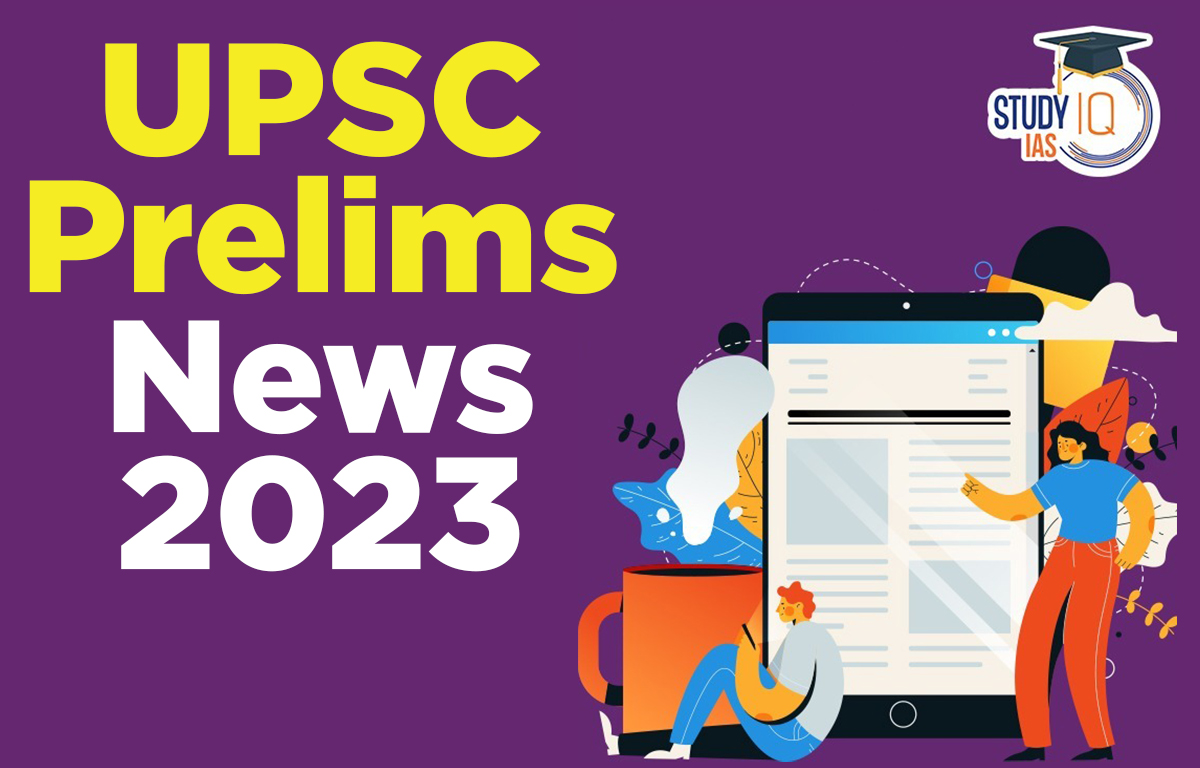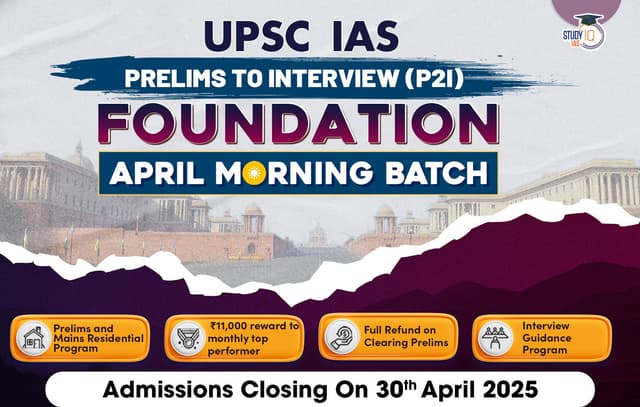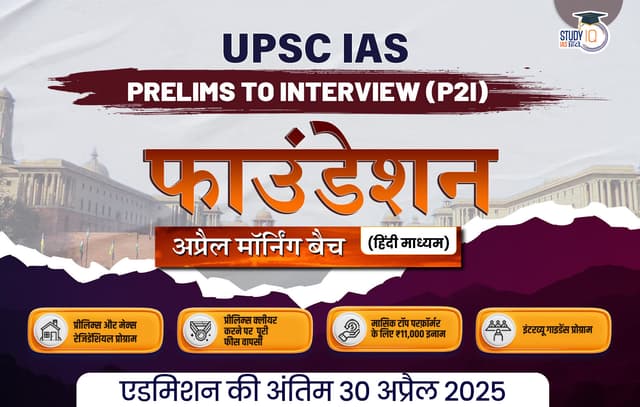UPSC Prelims News of 6 March 2023
Guillain-Barré Syndrome (GBS)
Context: The US Food and Drug Administration (FDA) said that a new vaccine for Respiratory Syncytial Virus (RSV) for elderly may potentially increase the risk for Guillain-Barre syndrome (GBS).
About Respiratory Syncytial Virus (RSV)
- It is a highly contagious virus that causes flu-like illness in people of all ages that increases in severity with age.
- Currently, there is no approved vaccine or RSV.
About Guillain-Barré syndrome (GBS)
- It is a rare neurological disorder in which the immune system mistakenly attacks part of the peripheral nervous system—the network of nerves located outside of the brain and spinal cord.
- GBS can range from a very mild case with brief weakness to nearly devastating paralysis, leaving you unable to breathe independently.
- GBS can affect anyone. It can strike at any age (although it is more frequent in adults and older people) and both sexes are equally prone to the disorder.
- GBS is estimated to affect about one person in 100,000 each year.
- It is not contagious or inherited.
One Nation, One Challan
Context: The Government of Gujarat has recently stated that it will set up virtual traffic courts under the ‘One Nation One Challan’ initiative.
What is One Nation, One Challan Initiative?
- One Nation, One Challan is an initiative of the Ministry of Road Transport and Highways to bring all related agencies, such as the traffic police and the Regional Transport Office (RTO), on one platform, to enable seamless collection of challans as well as data transfer.
- Features: The integrated system involves detection of traffic violations through the CCTV network and getting the registration number of the erring vehicle from applications like VAHAN (detecting the vehicle’s ownership details) and SARATHI (compilation of driving licenses).
- An e-challan is then generated with the relevant penalty amount, and sent to the mobile number linked with the vehicle.
- Significance: It will facilitate the Police in penalizing someone from a different State using the CCTV network as earlier it was difficult to find details of the vehicle ownership, as the database was not integrated.
How do Virtual Traffic Courts Work?
- Virtual courts are aimed at eliminating the presence of litigants in the court. An accused can search their case on the virtual court’s website. Upon successful payment of fine, the case will be shown as disposed of.
- If someone doesn’t pay the challan amount within 90 days, the challan will be automatically forwarded to a virtual court and proceedings will be initiated.
- Summons will be sent on the mobile phone of the offender. If the fine is still not paid, further legal proceedings will follow.
HUID Number
Context: The Union Ministry of Consumer Affairs, Food and Public Distribution has notified that the sale of gold jewellery will not be allowed without a Hallmark Unique Identification (HUID) number from April 1, 2023.
About HUID Number:
- HUID number is a six-digit alphanumeric code given to every piece of jewellery at the time of hallmarking and is a unique identifier for each gold item.
- The jewellery is stamped with the unique number manually at the Assaying & Hallmarking centre.
- The HUID makes it easy to trace the individual piece of jewellery, and is a guarantee of quality.
- In HUID-based Hallmarking, registration of jewellers is automatic with no human interference.
- It is aimed at ensuring the purity of Hallmarked jewellery and check any malpractice.
- HUID is a secure system and poses no risk to data privacy or security and brings about transparency, ensures consumers’ rights and obviates the chances of Inspector Raj.
What is a Hallmark?
- Hallmark is a mark on gold jewellery which is affixed by an entity recognized by Bureau of Indian Standards (BIS) to assure its fineness and purity.
- A BIS Hallmark consists of three symbols — the BIS logo, a symbol to indicate the purity and fineness of the jewellery, and then the HUID.
- No gold jewellery is made of 100 per cent gold, as gold in itself is very soft and has to be mixed with other metals to shape it into jewellery items. The “purer” the jewellery, i.e., the more gold a piece of jewellery has, the more expensive it will be.
- The three categories of hallmarked jewellery are:
- 22K916 means that it is a 22-caratgold and the piece of jewellery has 91.6 percent gold.
- 18K750 means that it is an 18-caratgold and the piece of jewellery has 75 percent gold.
- 14K585 means that it is a 14-caratgold and the piece of jewellery has 58.5 percent gold.
Cantillon Effect
Context: The financial measures, introduced across the world, to tackle slowdown has created Cantillon Effect.
About Cantillon Effect
- The Cantillon Effect is a monetary phenomenon where the initial recipients of new money see a disproportionate benefit while the latter users face a diminished effect.
- The term was coined by economist Richard Cantillon, who observed that the impact of monetary inflation is not evenly distributed.
How does it Work?
- When new money is introduced, a few privileged individuals or groups (banks, government agencies, or wealthy business owners) have the power to spend or invest the money before it impacts the economy.
- When the money makes way into the hands of the general public, its value is diminished due to the initial spending and investing by privileged individuals.
Implications of Cantillon Effect
- It can lead to wealth inequality as few privileged individuals who receive the new money can boost their wealth before the general public can access it.
- The new money spent and invested by the initial recipients can create inflationary pressures in the economy, impacting purchasing power for everyday goods and services of the general public.
Pump and Dump Scheme
Context: Sebi has recently barred noted Bollywood actors and a few others from the securities market for alleged involvement in the pump-and-dump scheme through YouTube channels.
About the Scheme
- The pump-and-dump scheme involves “pumping up” the share price, that is driving it higher by spreading misleading information through social media channels or various other media.
- It is an illegal act by an investor or group of investors wherein they promote their stocks and sell them once the stock price rises because of their endorsement.
- The promoters coordinate rumours, misinformation, or create hype in order to artificially increase interest in the security, leading to a surge in its price.
Whiskey Fungus
Context: Whiskey fungus’ has been found to cover US county in a black, sooty deposit.
About Whiskey Fungus
- Whiskey fungus, or Baudoinia compniacensis, thrives on ethanol vapours.
- It tends to cover a wide range of nearby surfaces, including construction materials, road signs, fences, outdoor furniture, and cars. It can also colonize natural materials like rock and vegetation.
- It was first discovered around distilleries in the Cognac region of France in the 1870s and has thrived around many distilleries worldwide including in the US and Canada.
- So far, researchers have not found any human health risks related to exposure to Baudoinia compniacensis, but it can damage property and kill trees.
Emergency Credit Line Guarantee Scheme (ECLGS)
Context: Over 97% of Emergency Credit Line Guarantee Scheme (ECLGS) borrowers are micro and small enterprises.
About
- ECLGS was rolled out in 2020 as part of the Centre’s Aatmanirbhar package in response to the Covid-19 crisis.
- The Government’s aim through this scheme was to provide unsecured loans to MSMEs and companies across the country to mitigate the losses suffered due to COVID-19 induced lockdowns.
- This scheme aimed to aid firms to meet their working capital needs and other operational costs as well.
- A 100% guarantee is provided by the National Credit Guarantee Trustee Company (NCGTC) to Member Lending Institutions (MLIs) – banks, financial institutions and Non-Banking Financial Companies (NBFCs).
- The credit product for which guarantee would be provided under the Scheme shall be named as ‘Guaranteed Emergency Credit Line (GECL)‘.
Emergency Credit Line Guarantee Scheme 1.0:
- To provide fully guaranteed and collateral free additional credit to MSMEs, business enterprises, MUDRA borrowers and individual loans for business purposes to the extent of 20% of their credit outstanding as on 29th February 2020.
- MSMEs with up to Rs 25. Crore outstanding and Rs. 100 crore turnovers were eligible.
Emergency Credit Line Guarantee Scheme 2.0:
- The amended version focused on entities in 26 stressed sectors identified by the Kamath Committee along with the healthcare sector with credit outstanding of more than Rs. 50 crore and up to Rs. 500 crores as of 29th February 2020.
- The revised scheme also has a five-year repayment window up from four years in ECLGS 1.0.
Emergency Credit Line Guarantee Scheme 3.0:
- It involves extending credit of up to 40% of total credit outstanding across all lending institutions as of 29th February 2020.
- The tenor of loans granted under ECLGS 3.0 would be 6 years, including a moratorium period of 2 years.
- Covers business enterprises in Hospitality, Travel & Tourism, Leisure & Sporting sectors, which had, as on 29th February 2020,
- Total credit outstanding not exceeding Rs. 500 crore and overdue, if any, were for 60 days or less.
Emergency Credit Line Guarantee Scheme 4.0:
- A 100 % guarantee to cover loans up to Rs 2 crore to hospitals, nursing homes, clinics, medical colleges for setting up on-site oxygen generation plants with the interest rate capped at 7.5 %.
SWAMIH Fund
Context: SWAMIH Fund has recently completed 20,557 homes since inception in 2019.
About the SWAMIH Fund
- In 2019, the central government launched the ‘Special Window for Funding Stalled Affordable and Middle-Income Housing Projects’ or ‘SWAMIH’ Fund Scheme.
- The objective of the scheme is to provide priority debt financing for the completion of stalled housing projects falling under the affordable and middle-income housing categories.
- This ‘last mile financing’ of stalled projects will be extended through a Category-II AIF (Alternate Investment Fund or AIF) debt fund registered with the Securities and Exchange Board of India (SEBI).
- As defined in SEBI (AIF) Regulations, 2012, AIFs refer to any privately pooled investment fund, (whether from Indian or foreign sources), in the form of a trust or a company or a body corporate or a Limited Liability Partnership (LLP).
- The Fund is sponsored by the Ministry of Finance, Government of India, and is managed by SBICAP Ventures Ltd., a State Bank Group company.
- The fund is considered as the lender of last resort for distressed projects.
- Impact of the fund:
- The fund has raised Rs. 15,530 crore so far with an aim to provide priority debt financing for the completion of stalled housing projects.
- In three years since inception in 2019, the Fund has already completed 20,557 homes and aims to complete over 81,000 homes in the next three years across 30 tier 1 and 2 cities.
- The Fund has also played a critical role in the growth of many ancillary industries in real estate and infrastructure sector having successfully unlocked liquidity of more than Rs. 35,000 crore.


 UPSC Prelims News 20 March 2023
UPSC Prelims News 20 March 2023
 UPSC Prelims News 17 March 2023
UPSC Prelims News 17 March 2023





















